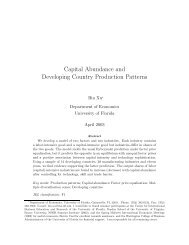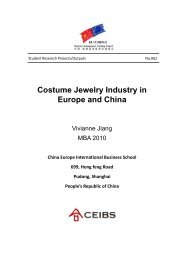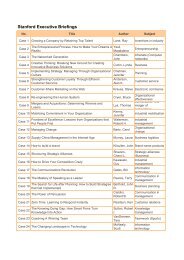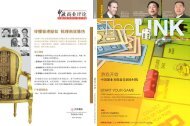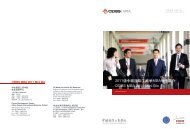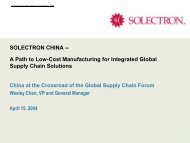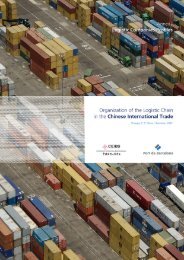Untitled - China Europe International Business School
Untitled - China Europe International Business School
Untitled - China Europe International Business School
You also want an ePaper? Increase the reach of your titles
YUMPU automatically turns print PDFs into web optimized ePapers that Google loves.
Organization of the logistic chain in the Chinese international trade<br />
IV.2. Textile Industry<br />
<strong>China</strong> Textile Industry is currently one of the main industries in <strong>China</strong>'s economy and has become a<br />
major export sector, accounting for almost 10% of the country’s total trade of goods in 2004. Exports<br />
and imports of Textile and Apparel Industry accounted for 16% and 3% respectively of the country’s<br />
total export and import of goods.<br />
Textile industry overview<br />
When in the 1980’s <strong>China</strong> started its economic reform process all textile enterprises were owned by the<br />
state. The speed of reforms and restructuring led to significant improvements in productivity and<br />
profitability. Nowadays, more than twenty years later, the current environment will allow Chinese<br />
companies to compete in other fields instead of taking price as the only advantage.<br />
However, following trade liberalization, <strong>China</strong> Textile industry faces severe challenges from opening<br />
market and fierce competition. After the entry into WTO, <strong>China</strong> will compete with other big textile<br />
exporters to obtain larger market share and the liberalization in trading will lead to a stronger<br />
competition among domestic textile enterprises.<br />
Moreover, the final of the quota system arrived in 2005 although real free trade of textile has not yet<br />
materialized and <strong>China</strong> has been involved in many conflicts in <strong>International</strong> textile trade especially with<br />
the United States and the <strong>Europe</strong>an Union. On the other hand, the removal of the quota system may<br />
attract more foreign capital to be invested in <strong>China</strong>’s Textile industry, which would foster the<br />
technological upgrading of the industry.<br />
The Textile Industry in <strong>China</strong> is also threatened by the appreciation of the Renminbi as the industry’s<br />
profits are tight. Moreover, a currency appreciation may raise the labor costs and fixed costs which<br />
neighboring competitors might take advantage of.<br />
Textile and Apparel Production in <strong>China</strong><br />
In 2004 Zhejiang province overtook Guangdong as the major exporting province in <strong>China</strong> for Textile<br />
and Apparel. Guangdong, Jiangsu, Shanghai and Shandong are the other four leading Chinese export<br />
provinces. The five leading provinces aggregated export value accounted for more than ¾ of the<br />
country’s total.<br />
Textile Industry Exports and Imports per provinces (million €). 2005<br />
Provinces Export Growth Import Growth<br />
Zhejiang 19.548,1 24,3% 918,8 6,27%<br />
Hangzhou 5.072,1 24,9% 227,6 18,7%<br />
Ningbo 3.993,7 21,3% 194,2 -1,31%<br />
Jiangsu 15.055,7 26,3% 1.633,3 5,07%<br />
Nanjing 2.767,3 16,4% 151,8 -3,47%<br />
Shanghai 10.94,9 10,5% 1.820,4 0,94%<br />
Source: <strong>China</strong> Chamber of Commerce for Import & Export of Textiles<br />
CEIBS Port of Barcelona Chair of Logistics 42



